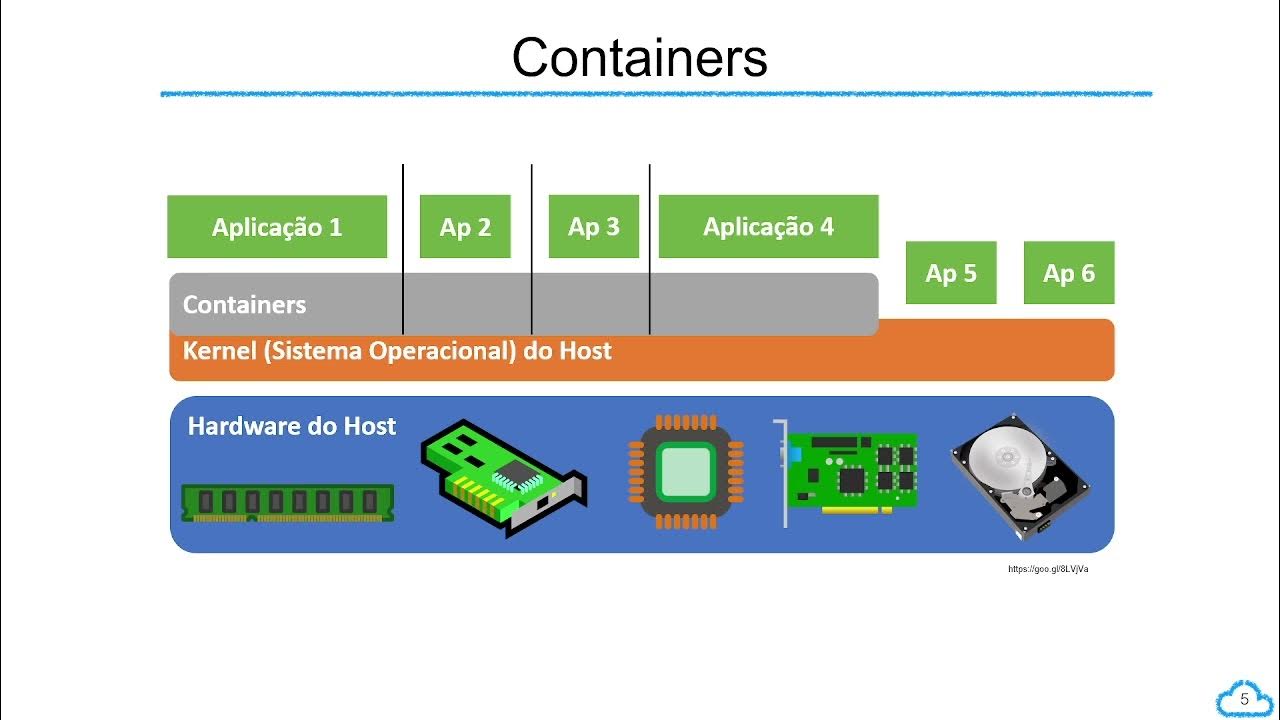Pods and Containers - Kubernetes Networking | Container Communication inside the Pod
Summary
TLDRThis video script delves into the concept of pods in Kubernetes, explaining their importance as the fundamental unit that abstracts over containers. It clarifies the need for pods to manage port allocations efficiently in a distributed system, ensuring no conflicts arise from multiple containers running on the same host. The script also discusses the unique IP address assigned to each pod, facilitating internal communication and demonstrating Kubernetes' ability to abstract container runtime. Practical examples illustrate how multiple containers within a pod communicate and the role of pause containers in maintaining network namespaces.
Takeaways
- 😀 Kubernetes uses 'pods' as the smallest unit or component, not containers. A pod typically contains one main container.
- 🏠 Having a pod is an abstraction over a container, which is important in Kubernetes for managing containers in a distributed infrastructure.
- 🌐 Every pod in Kubernetes has a unique IP address, which is reachable from all other pods in the cluster, simplifying networking.
- 🔄 The challenge of port allocation in distributed systems is addressed by pods, as they provide a self-contained environment with their own IP addresses and port ranges.
- 🚀 Pods can run multiple containers, which is useful for running helper or side applications alongside the main application, such as synchronization or backup services.
- 🔗 Containers within a pod can communicate with each other via localhost and a port number, as they all run in the same network namespace.
- 💡 Kubernetes is not tied to any specific container runtime, making it flexible to replace the container runtime without changing the pod configuration.
- 🌐 Kubernetes abstracts containers into pods, which helps in managing port mappings and avoiding conflicts when running multiple services on a single host.
- 📦 A pod can be seen as a small machine with its own network namespace and IP address, making it easier to manage containers and their networking.
- 🔄 The 'pause' container in each pod is used to reserve and hold the pod's network namespace, allowing containers to communicate and maintain the pod's IP address even if a container restarts.
Q & A
What is the smallest unit or component in Kubernetes?
-The smallest unit or component in Kubernetes is a pod, not a container.
Why does Kubernetes use pods instead of directly managing containers?
-Kubernetes uses pods to abstract containers, providing each pod with a unique IP address and a network namespace, which helps in managing network ports and avoids port conflicts.
What is a typical configuration of a pod in Kubernetes?
-A typical pod contains one main container, but it can also include multiple containers, such as helper or sidecar containers, which run additional tasks like backups or authentication.
How do containers within the same pod communicate with each other?
-Containers within the same pod communicate with each other via localhost and a port number since they share the same network namespace.
What problem does assigning a unique IP address to each pod solve?
-Assigning a unique IP address to each pod solves the problem of port conflicts on a host by isolating the network ports within each pod.
How does Kubernetes handle the replacement of container runtimes?
-Kubernetes can easily replace container runtimes because it abstracts containers at the pod level, meaning the configuration remains the same regardless of the container runtime used.
What happens to the pod's IP address if a container within the pod dies and is recreated?
-The pod retains its IP address if a container within it dies and is recreated, thanks to the pause container that holds the network namespace.
How does Kubernetes handle running multiple instances of the same application?
-Kubernetes can run multiple instances of the same application in different pods without port conflicts, as each pod has its own IP address and isolated network namespace.
What is a pause container in Kubernetes?
-A pause container is a container that holds the pod's network namespace, allowing the containers within the pod to communicate with each other and ensuring the pod's IP address is maintained even if a container is recreated.
What additional networking concepts are important in Kubernetes beyond pod communication?
-Additional networking concepts in Kubernetes include how pods communicate across nodes, how the outside world communicates with the Kubernetes cluster, and how Kubernetes integrates with the underlying infrastructure network, whether it is a cloud platform or bare-metal.
Outlines

Dieser Bereich ist nur für Premium-Benutzer verfügbar. Bitte führen Sie ein Upgrade durch, um auf diesen Abschnitt zuzugreifen.
Upgrade durchführenMindmap

Dieser Bereich ist nur für Premium-Benutzer verfügbar. Bitte führen Sie ein Upgrade durch, um auf diesen Abschnitt zuzugreifen.
Upgrade durchführenKeywords

Dieser Bereich ist nur für Premium-Benutzer verfügbar. Bitte führen Sie ein Upgrade durch, um auf diesen Abschnitt zuzugreifen.
Upgrade durchführenHighlights

Dieser Bereich ist nur für Premium-Benutzer verfügbar. Bitte führen Sie ein Upgrade durch, um auf diesen Abschnitt zuzugreifen.
Upgrade durchführenTranscripts

Dieser Bereich ist nur für Premium-Benutzer verfügbar. Bitte führen Sie ein Upgrade durch, um auf diesen Abschnitt zuzugreifen.
Upgrade durchführenWeitere ähnliche Videos ansehen

Day 5/40 - What is Kubernetes - Kubernetes Architecture Explained

Electrical Conductivity of Different Materials | Electrical4U

Kubernetes Architecture in 7 minutes | K8s explained

CRYSTAL LATTICE AND UNIT CELL

קורס kubernetes (k8s) המלא - שיעור 2 - ארכיטקטורה של אשכול (cluster architecture)

6 - Containers
5.0 / 5 (0 votes)
